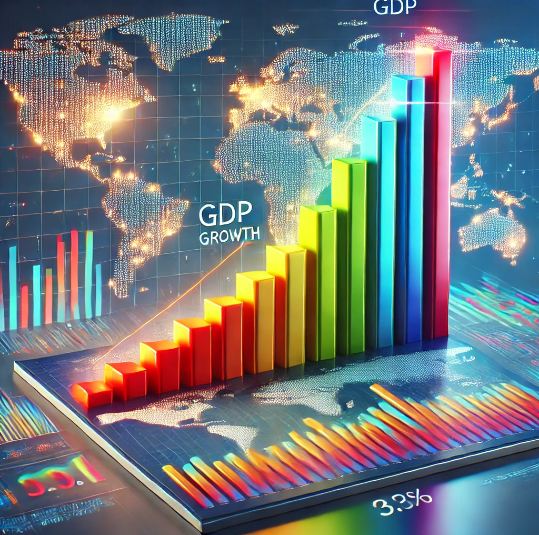India’s Gross Domestic Product (GDP) serves as a vital indicator of its economic health and global standing. As of 2024, India’s GDP stands at approximately $3.94 trillion in nominal terms, solidifying its position as one of the world’s leading economies. But how exactly is this figure calculated? Let’s explore the concept and methods used to measure GDP.
What Is GDP?
GDP is the total monetary value of all final goods and services produced within a country’s borders over a specific period. It provides a comprehensive snapshot of a nation’s economic activity and serves as a benchmark for comparing economic performance over time or between countries.
How Is India’s GDP Calculated?
India adopts three primary methods to calculate its GDP, each offering unique insights into the economy:
1. Production (Output) Method
This method measures the economy’s output by summing up the value added at every stage of production across various sectors such as agriculture, industry, and services. It avoids double-counting by subtracting the value of intermediate goods used in production.
For instance, if a farmer grows wheat worth ₹10,000, and a baker uses it to produce bread worth ₹15,000, only ₹5,000 (the value added by the baker) is included in the GDP calculation.
2. Expenditure Method
This approach looks at the spending on final goods and services and is represented by the formula:
GDP = C + I + G + (X – M)
- C: Household consumption expenditure on goods and services
- I: Business investments in machinery, infrastructure, and inventories
- G: Government spending on public services, defense, and infrastructure
- X: Exports of goods and services
- M: Imports of goods and services
For example, if consumers spend 100 crore on goods, businesses invest 50 crore, the government spends 80 crore, and net exports (exports minus imports) add 20 crore, the GDP via expenditure method would be 250 crore.
3. Income Method
The income method calculates GDP by aggregating all incomes earned within the economy, including:
- Wages and salaries
- Profits earned by businesses
- Rent earned by property owners
- Taxes collected by the government (minus subsidies)
This method reflects the total income generated by the nation’s production activities.
Why Is GDP Important?
India’s GDP not only measures the size of its economy but also indicates economic growth trends, investment potential, and living standards. Policymakers use GDP data to design strategies for economic development, while businesses and investors analyze it to identify market opportunities.
Challenges in GDP Measurement
Calculating GDP in a diverse and rapidly growing economy like India comes with challenges:
- Informal Sector: India’s vast informal economy often goes underreported.
- Data Collection: Ensuring accuracy and timeliness in data collection is complex.
- Environmental Costs: GDP doesn’t account for environmental degradation or resource depletion.
Conclusion
India’s GDP calculation is a multi-faceted process that combines data from production, expenditure, and income perspectives. While it provides a valuable economic snapshot, understanding its nuances is essential for interpreting the nation’s true economic strength. As India continues its journey towards becoming a $5 trillion economy, the GDP will remain a critical metric of its progress.





You need to be a part of a contest for one of thee finest sites on thhe internet.
I am going to recomkmend this website!